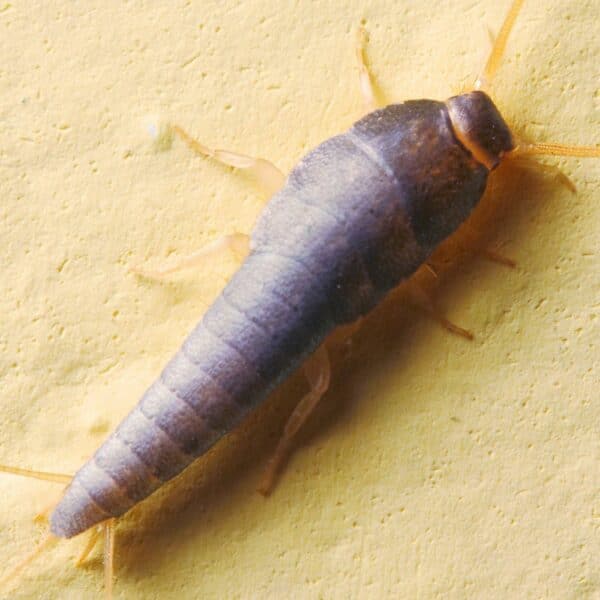Although they are not vector pests that spread disease, silverfish are difficult to eradicate once they have invaded a home because of their elusive nature and prolific reproduction habits.
Size: 1/2 to 1 in.
Color: Silver-gray
Body Structure: Triangular body with three prominent tines on its posterior and two antennae coming from the head
Characteristics: Silverfish lay their eggs in groups of two or three in cracks and crevices. Eggs are initially soft and white but harden to a yellow texture after a few hours. After 40 days, eggs hatch, releasing fully-formed nymphs, which resemble adults yet are smaller in size and are grayish-white in color. Before reaching maturity, a silverfish will molt 6 times. Adults molt 60-70 times during their lifetime.
Habitat/Behavior: Silverfish live in damp, dark areas and prefer moist basements and crawlspaces. They can often be found in cardboard storage boxes. Their diet consists of fungal molds in the wild; however, indoors, they will feast on paper, glue, linens, cotton cloth, and starchy food items, causing marked destruction of boxed, dry foodstuffs.
Prevention/Treatment: Because silverfish thrive in damp conditions, controlling humidity is the best course of prevention. Also, caulking cracks and gaps around your home also is a smart preventative measure. One also can help prevent silverfish infestation by eliminating clutter and performing routine sanitation in areas that are attractive to silverfish. Cinnamon has been shown to be an effective silverfish deterrent; however, cinnamon does not kill the insects or their eggs, meaning infestation may continue to grow even if fewer insects are apparent. Because silverfish reproduce quickly, you should consult a pest control professional immediately if you suspect infestation.

